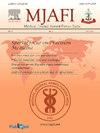The role of cation-exchange resins in hyperkalemia management
Q2 Medicine
引用次数: 0
Abstract
Hyperkalemia, characterized by elevated serum potassium levels, poses significant health risks, including life-threatening cardiac arrhythmias. The management of hyperkalemia has evolved, incorporating calcium polystyrene sulfonate (CPS) and newer agents such as sodium zirconium cyclosilicate (SZC) and patiromer alongside traditional treatments. This review provides a comprehensive examination of current management strategies for hyperkalemia, focusing on the comparative effectiveness, safety profiles, and patient preferences concerning CPS, SZC, and patiromer. Through an analysis of clinical trials, safety data, and guidelines, we highlight SZC's rapid action and favorable safety profile compared to CPS, which has been a standard treatment option for years. Additionally, the review explores patiromer, other emerging treatments, and future directions in hyperkalemia management, including the potential benefits of combination therapies and the role of personalized medicine. The findings suggest a shift toward newer potassium-binding agents in clinical practice, underscored by the need for individualized treatment approaches based on patient-specific factors. This article aims to guide clinicians in optimizing hyperkalemia management, ensuring effective, safe, and patient-centered care.
求助全文
约1分钟内获得全文
求助全文
来源期刊

Medical Journal Armed Forces India
Medicine-Medicine (all)
CiteScore
3.40
自引率
0.00%
发文量
206
期刊介绍:
This journal was conceived in 1945 as the Journal of Indian Army Medical Corps. Col DR Thapar was the first Editor who published it on behalf of Lt. Gen Gordon Wilson, the then Director of Medical Services in India. Over the years the journal has achieved various milestones. Presently it is published in Vancouver style, printed on offset, and has a distribution exceeding 5000 per issue. It is published in January, April, July and October each year.
 求助内容:
求助内容: 应助结果提醒方式:
应助结果提醒方式:


